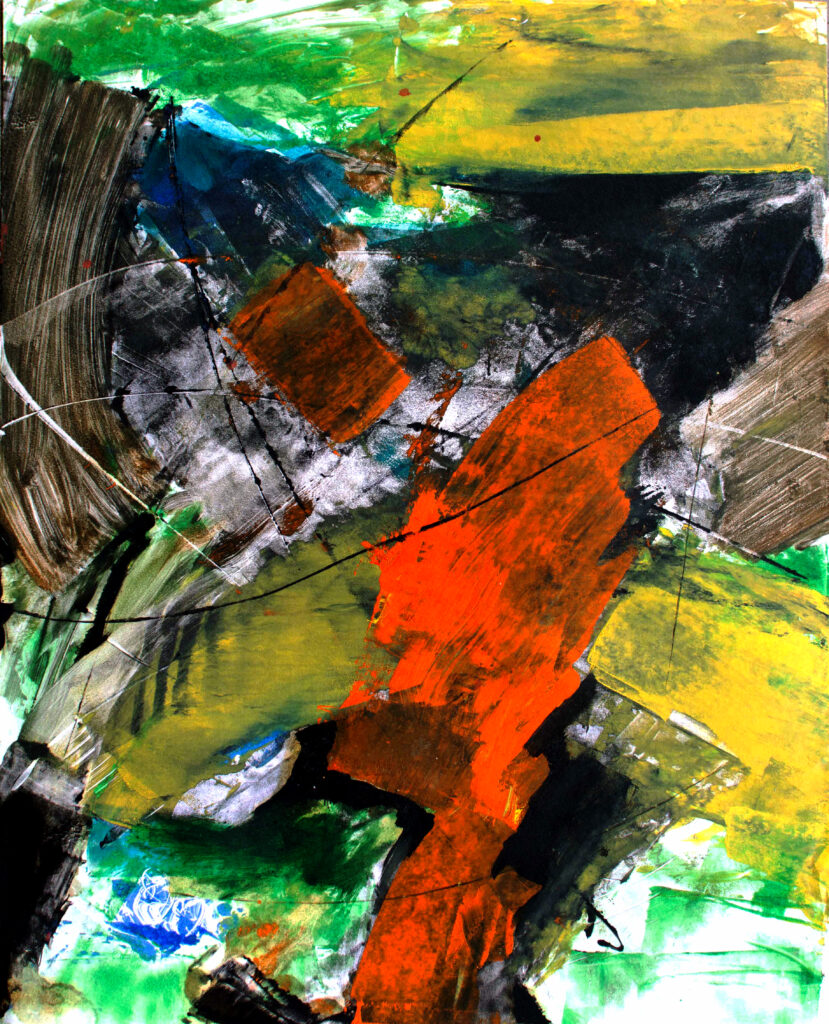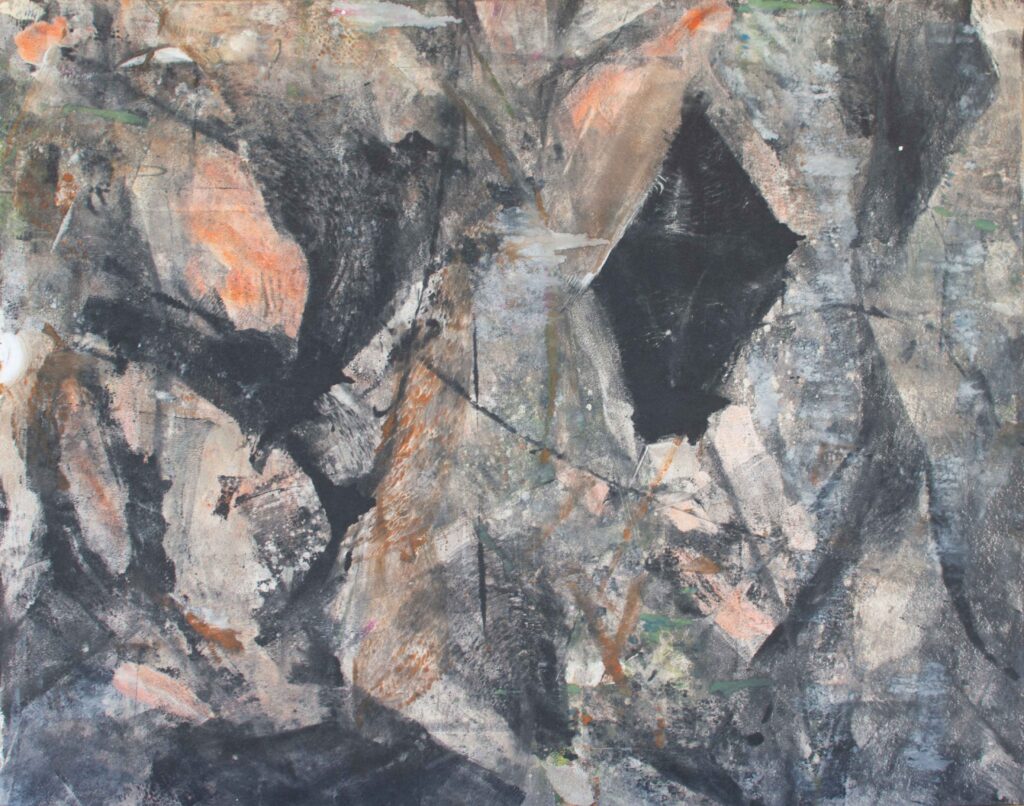A Long Time Coming
This curated series of monoprints represents the beginnings of my exploration of the grid with organic forms. In some images, the grid and form are interwoven, in others the form becomes ghostlike, and the grid almost overrides it altogether. Alternatively, in some prints the form overtakes the grid, becoming a line, then an edge, and finally disappearing altogether. All monoprints are approximately 16 x 20 inches or 20 x 16 inches, depending on orientation. (1986-1989)
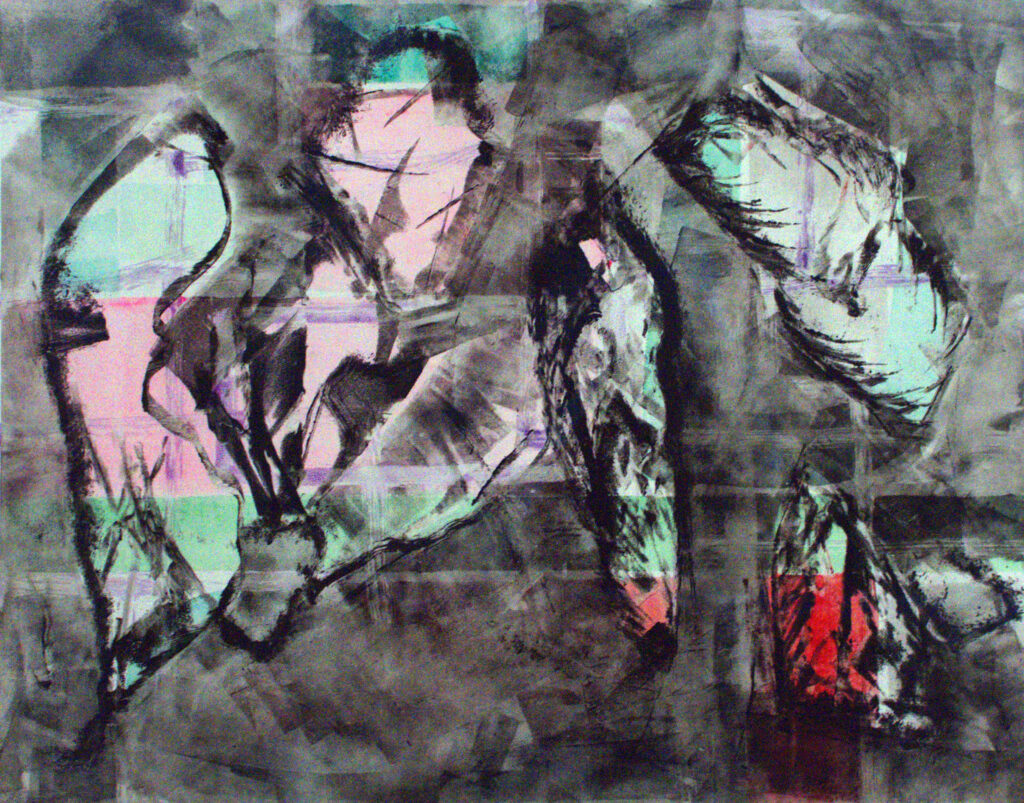
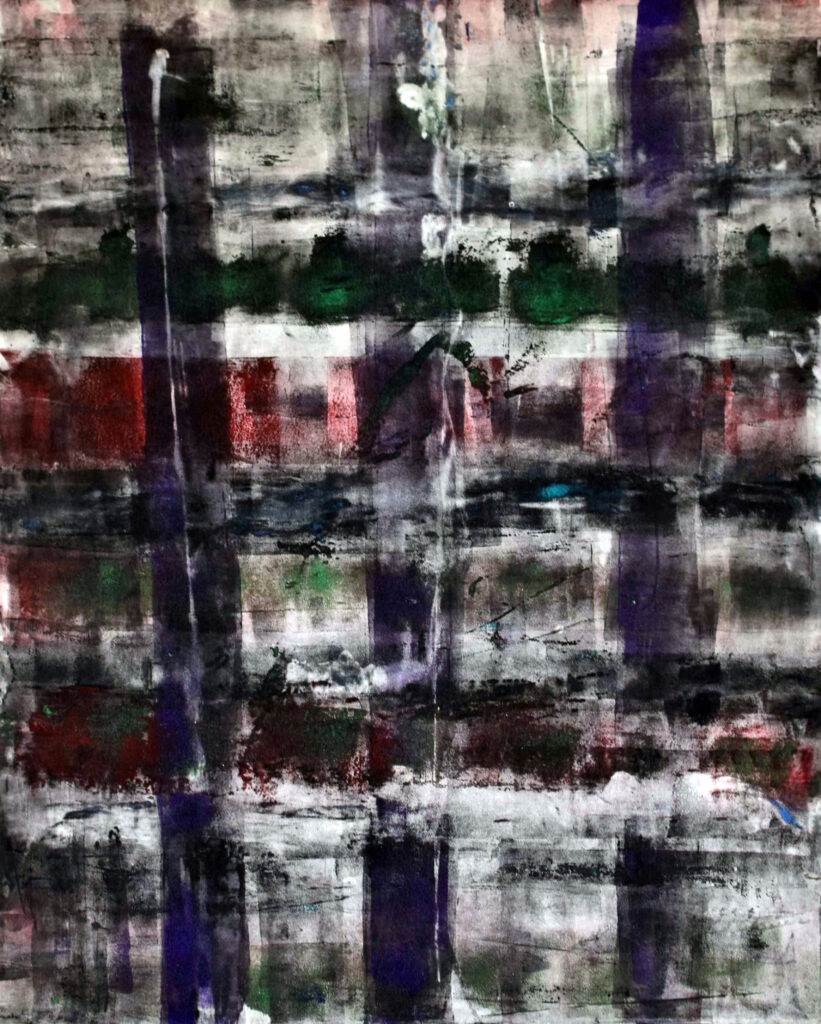
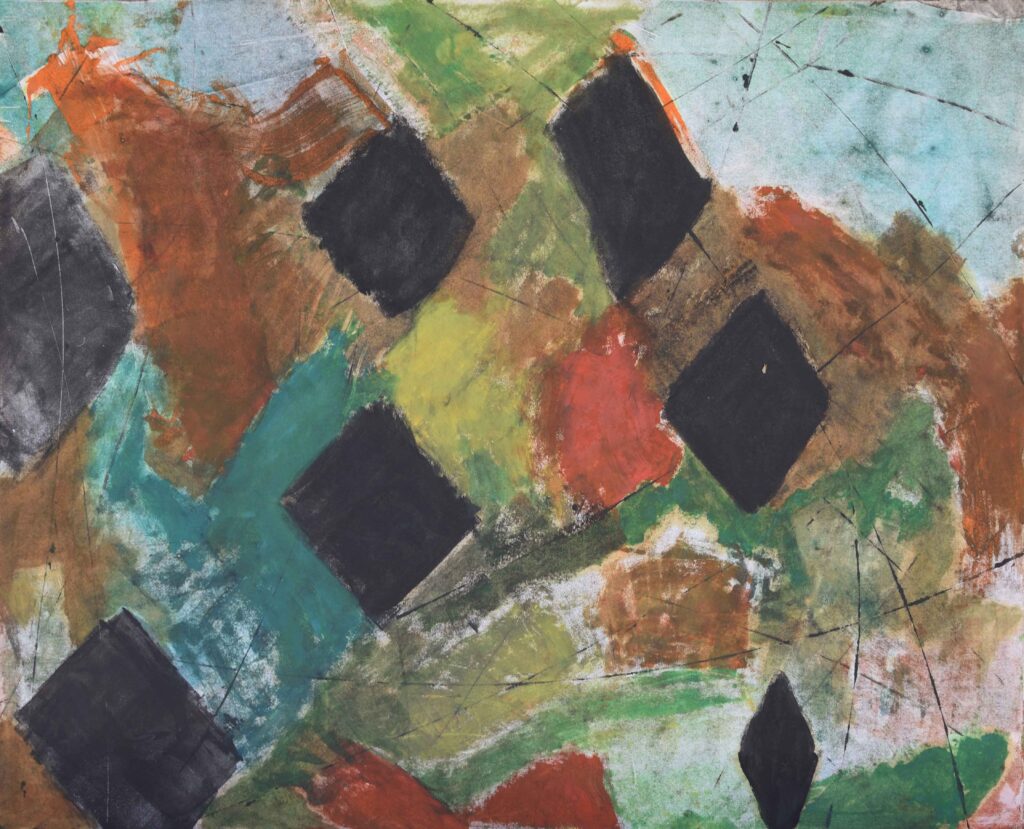
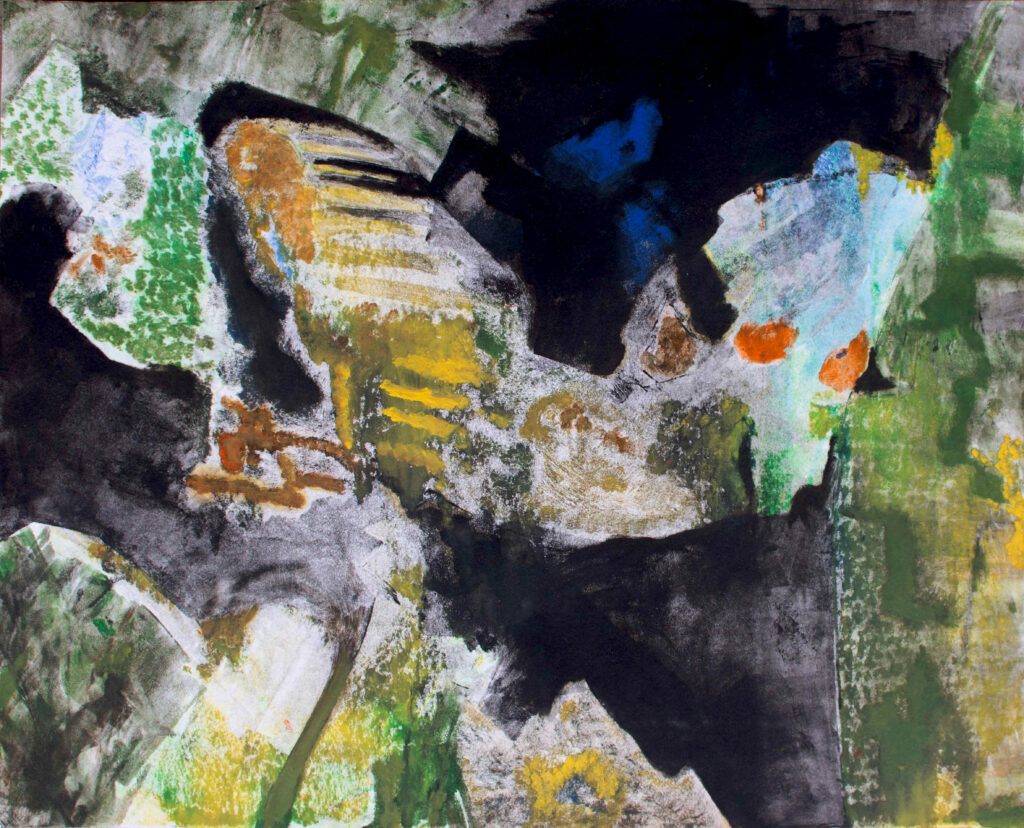
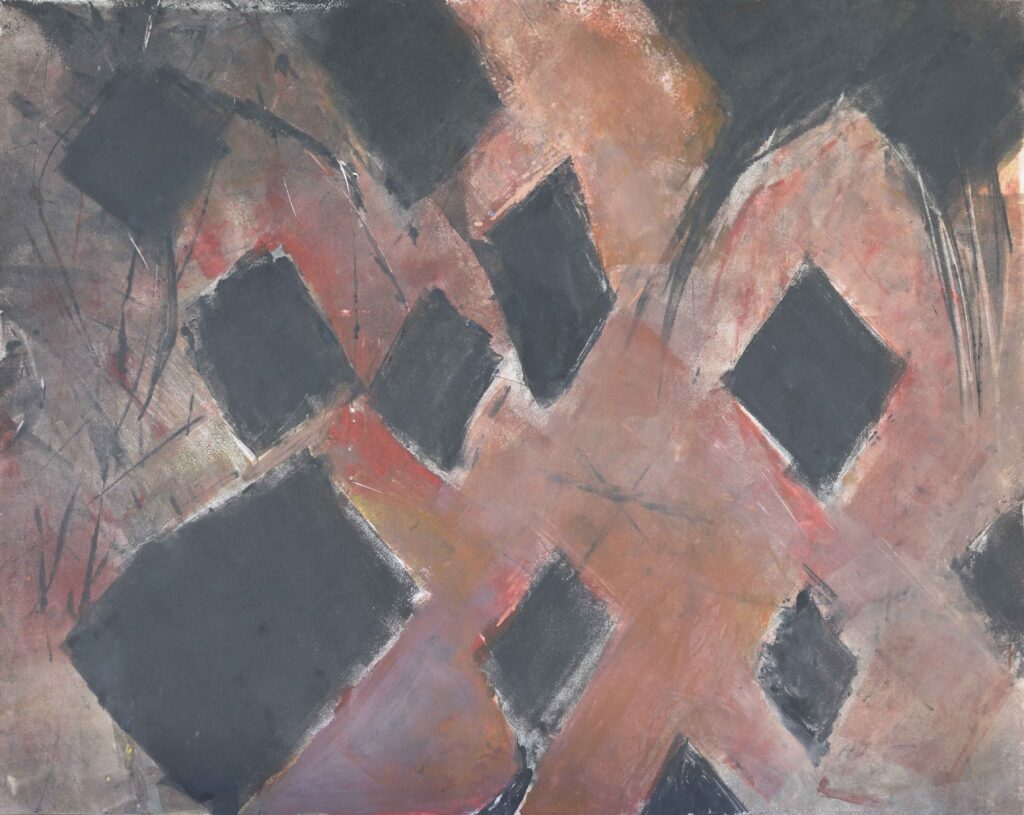
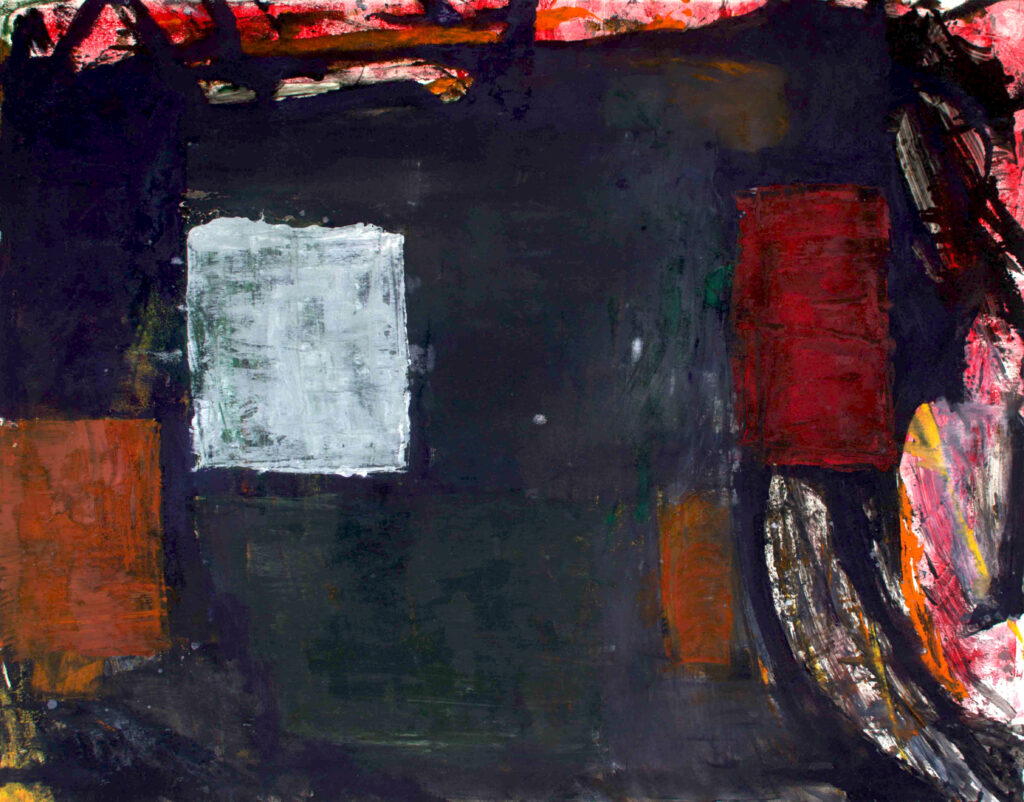
Details
